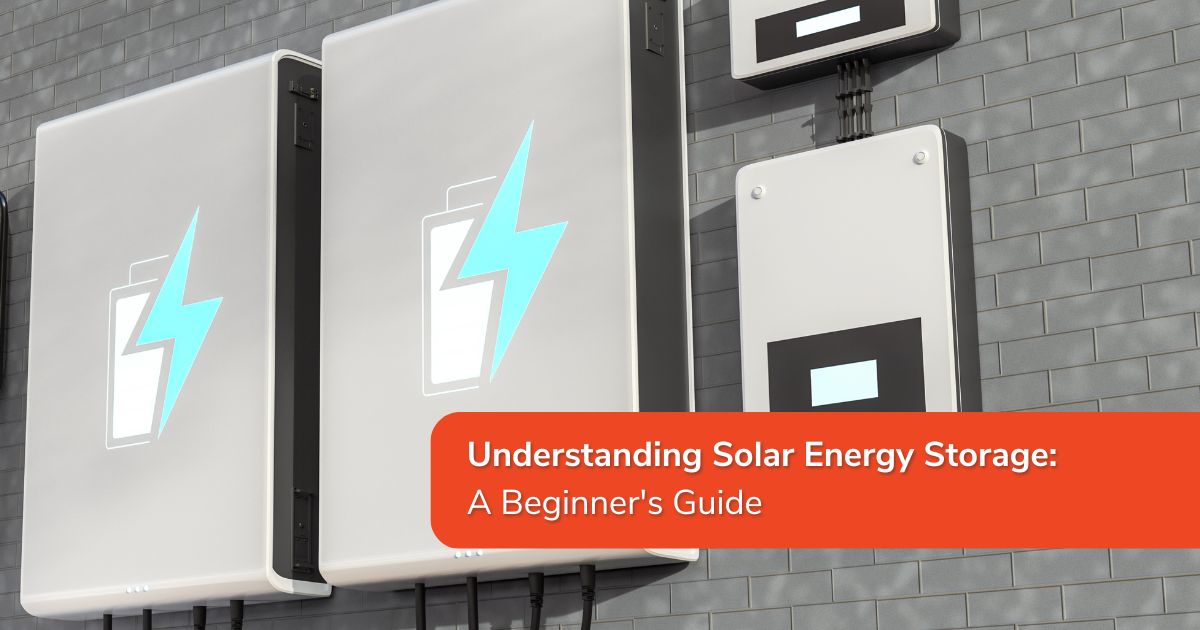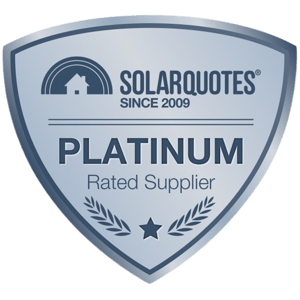Understanding Solar Energy Storage: A Beginner's Guide

As climate change and environmental concerns push the world towards more sustainable energy solutions, the solar power industry has experienced a significant uptick in interest and innovation. For Australians looking to harness the abundant sunshine for their energy needs, understanding solar energy storage is pivotal.
Home solar energy storage systems, such as the SolarEdge Home Battery and the Tesla Powerwall, are redefining the relationship between households and renewable energy. They offer the capacity to store energy produced by solar panels, relying less on the electricity grid and ensuring power during outages.
If you're new to solar power, this comprehensive guide will walk you through the essentials of solar energy storage and introduce you to the cutting-edge products transforming the energy landscape.
The Basics of Solar Energy Storage
Solar energy storage involves capturing energy from the sun during peak hours and storing it for later use. This means you can power your home during the night or on overcast days using energy generated and stored from your solar panels. The process is at the heart of achieving energy independence and optimizing the benefits of solar technology.
How Solar Energy is Stored
The storage of solar energy for residential use primarily relies on batteries. These are connected to the solar panel system and charge throughout the day. When the solar panels generate electricity, the excess power is used to charge the battery. Once charged, the battery can supply stored electricity to the house.
Why Storage Matters
Energy storage is crucial as it allows homeowners to consume solar energy at times when they need it most, aligning usage with generation. It's particularly important for Australians due to the uneven solar exposure across different regions and the necessity of having power reserves during grid failures or blackouts.
Understanding Solar Batteries
Solar batteries, like the SolarEdge Home Battery and the Tesla Powerwall, are the cornerstone of solar energy storage systems. They are designed to efficiently store the electrical energy produced by a solar panel system for later use.
Key Features of Solar Batteries
- Round Trip Efficiency: This denotes how efficiently the battery can store and retrieve solar energy. For instance, a SolarEdge Home Battery offers a round-trip efficiency of up to 94.5%, ensuring minimal energy loss during the process.
- Battery Life: Both the SolarEdge Home Battery and the Tesla Powerwall feature warranties that cover their expected operational lifespan, providing peace of mind for long-term use.
- Scalability: The ability to stack multiple batteries allows for customization of storage capacity to meet varying energy demands. The SolarEdge Home Battery, for instance, can stack up to three batteries per inverter.
- Integration: These batteris are designed to integrate seamlessly with home solar systems, providing easy installation and improving overall system efficiency.
Choosing the Right Solar Battery for Your Home
Selecting a solar battery involves considering several factors, including the size and energy capacity of the battery, compatibility with your existing solar panel system, and the warranty. Manufacturers provide a spectrum of battery solutions optimized for different home setups.
SolarEdge Home Battery vs. Tesla Powerwall
The SolarEdge Home Battery stands out with its high round-trip efficiency and stackable design, which caters to larger energy storage needs. Meanwhile, the Tesla Powerwall features a more significant energy capacity and is known for its sleek, wall-mounted design and integration with the Tesla app for seamless management.
Compatibility and Solar Battery Inverters
When selecting a solar battery, ensuring compatibility with your inverter is critical. SolarEdge Home Batteries work hand-in-hand with SolarEdge inverters, which offer a high degree of DC efficiency and are ideal for larger solar system configurations. On the other hand, the Tesla Powerwall can be integrated with a variety of inverters.
Installation and Maintenance
Both the SolarEdge Home Battery and the Tesla Powerwall have user-friendly installations, with the former designed to work with SolarEdge single-phase Home Hub and Genesis Inverters and the latter featuring floor or wall mounting options for indoor or outdoor use. Regular maintenance, typically consisting of system check-ups, is important to ensure optimal performance and longevity.
Getting Started with Solar Energy Storage
Embarking on your solar energy storage journey starts with evaluating your energy needs, understanding your home's energy consumption patterns, and assessing the solar energy potential of your location.
Site Evaluation and Solar Potential Analysis
Before choosing a solar battery, it's essential to conduct a site evaluation to determine the feasibility of installing a solar panel system, as well as the solar potential of your location. Tools like SolarEdge's or Tesla's solar calculators can help estimate the energy production and potential savings from a solar installation.
Financial Considerations and Incentives
The financial aspect is critical when investing in solar energy storage. Consider the upfront cost of the system, available incentives or rebates, and potential long-term savings. Financial institutions, like Nectr, often provide financing options to make solar technology more accessible.
Selecting an Installer
Engaging with a reputable and experienced solar energy company is vital. Smart Energy Answers, for example, offers end-to-end services, including consultation, installation, and ongoing support to ensure a smooth transition to solar energy storage.
Managing Your Solar Energy Storage System
Once your solar energy storage system is in place, effective management is key to reaping the full rewards of this sustainable technology.
Monitoring Your Solar System
Both SolarEdge and Tesla provide intuitive apps that enable you to monitor your solar system's energy production and consumption, track your battery status, and make adjustments on the go.
Optimizing Battery Usage
Utilize your solar battery's smart algorithms or self-service capabilities to match energy consumption patterns, forecast peak electricity rates, and maximize the use of stored solar energy.
Ensuring System Efficiency
Regularly check your battery's performance and ensure that all components of your solar system are operating efficiently. Any deviations in performance should be promptly addressed to maintain optimal energy savings.
The Future of Solar Energy Storage
As technology advances and the demand for clean energy solutions grows, we can expect further innovations in solar energy storage. The integration of Artificial Intelligence (AI) and smart grid solutions with solar storage is set to enhance energy management capabilities significantly.
Stay informed about developments in the solar power sector and continuously evaluate how you can leverage these changes to benefit from a sustainable and cost-effective energy solution.
Conclusion
Solar energy storage is not just a trend — it's the future of sustainable home energy management. The benefits of installing a solar battery are significant, from reducing your carbon footprint to enhancing your household's energy independence.
Whether you opt for the SolarEdge Home Battery, the Tesla Powerwall, or other emerging solar storage solutions, investing in solar energy storage is an investment in a cleaner and more resilient energy future for your home and Australia at large. Smart Energy Answers stands ready to support you on this transformative journey towards a greener, more sustainable lifestyle.
Are you ready to take the next step towards solar energy independence? Contact us today to learn more about our solar solutions and how you can integrate storage into your home. Let's power a brighter and cleaner future, one home at a time.
%20(1).png?width=265&height=96&name=www.smartenergyanswers.com.auhs-fshubfsSmart%20Energy%20Answers%20Logo%20(HIRES)%20(1).png)

.png?width=514&height=121&name=Tesla%20Powerwall%203%20(new).png)







